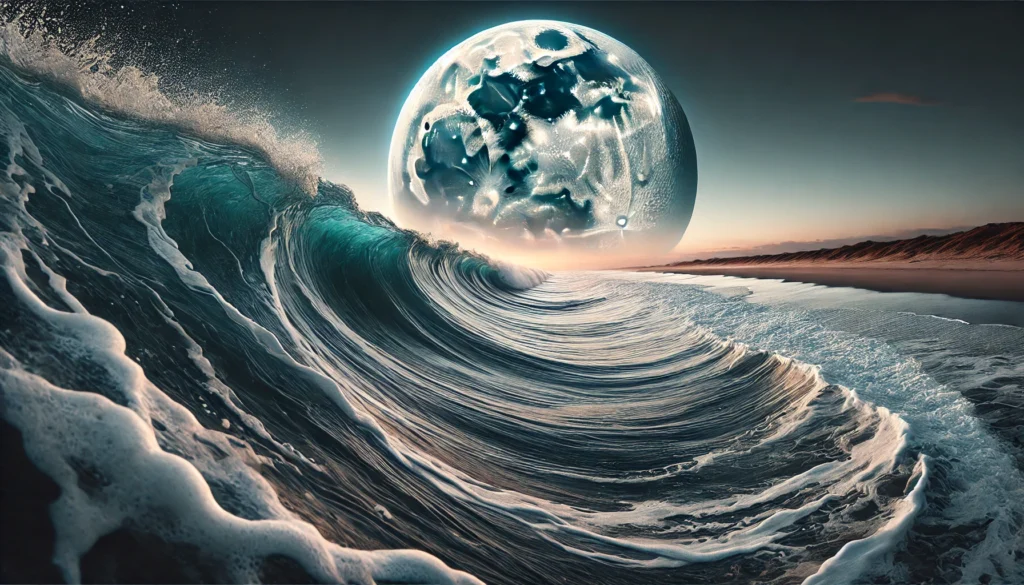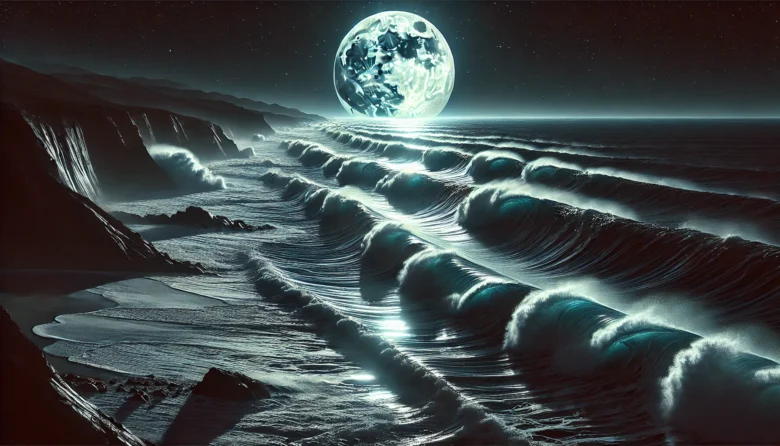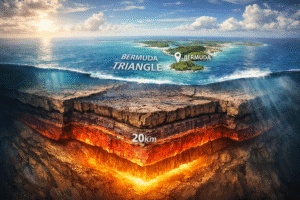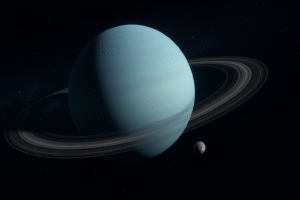Have you ever stood by the ocean, watching the waves ebb and flow, and wondered what causes this rhythmic rise and fall of the sea? The answer lies in a fascinating natural phenomenon called tidal forces. These forces are responsible for the tides, which are more than just a beautiful spectacle—they have profound effects on our planet, from shaping coastlines to influencing marine life. In this blog, we’ll dive into the science behind tidal forces and explore their far-reaching effects on Earth.
Understanding Tidal Forces: The Basics
Tidal forces arise from the gravitational influence of celestial bodies, mainly the Moon and the Sun, acting upon Earth. While both the Sun and Moon play a role, the Moon has a more significant impact due to its proximity to our planet. The basic principle behind tidal forces is gravity, the force that attracts two bodies toward each other. The side of the Earth that is closest to the Moon experiences a stronger gravitational pull, causing the water in the oceans to bulge outwards, creating what we call a high tide. At the same time, another high tide forms on the Earth’s opposite side due to the centrifugal force generated by the Earth-Moon interaction.
Why Two Tides?
You might wonder why there are two high tides in a day. This occurs because as the Earth rotates, different parts of it move through these tidal bulges. So, most coastal areas experience two high tides and two low tides roughly every 24 hours. This regular pattern is known as the tidal cycle.

The Role of the Sun in Tidal Forces
Although the Sun is about 400 times farther from Earth than the Moon, it still exerts a significant gravitational force due to its massive size. The Sun’s influence on tides can either amplify or diminish the effects of the Moon, depending on their relative positions. During a full moon or new moon, when the Sun, Moon, and Earth are in alignment, we experience what is known as spring tides—the highest high tides and the lowest low tides. On the other hand, when the Sun and Moon are positioned at right angles in relation to Earth, we experience neap tides, which are the lowest high tides and the highest low tides.
Tidal Forces and Their Effects on Earth
Tidal forces have effects that reach far beyond the simple rise and fall of ocean levels. Let’s explore some of the significant effects:
Shaping Coastlines: Over time, tidal forces play a crucial role in shaping coastlines. The constant ebb and flow of tides contribute to coastal erosion, sediment deposition, and the formation of various coastal features like estuaries and tidal flats. In regions like the Sundarbans in India, the world’s largest mangrove forest, tidal forces significantly influence the landscape and ecosystem.
Tidal Currents: Tides also generate tidal currents, which are the horizontal flow of water associated with the rise and fall of the tide. These currents are particularly strong in narrow inlets, estuaries, and around islands. Tidal currents are crucial for marine navigation and have been harnessed for tidal energy, a renewable energy source. For example, the Gulf of Khambhat in India has some of the strongest tidal currents, making it a potential site for tidal power generation.
Marine Life: Tidal forces play a vital role in the life cycles of various marine species. Many marine organisms, such as crabs, oysters, and certain species of fish, rely on tides for feeding, reproduction, and migration. For instance, the grunion fish, found along the coast of California, times its spawning activities with the highest spring tides, ensuring that their eggs are safely deposited above the high tide line.
Tidal Resonance and Amplification: In certain geographical locations, tidal forces can lead to tidal resonance, where the natural period of oscillation of a body of water aligns with the tidal frequency, resulting in amplified tides. The Bay of Fundy in Canada is a famous example, where tidal resonance leads to some of the highest tides in the world, reaching up to 16 meters (52 feet).
Impact on Human Activities: Tidal forces have a direct impact on human activities, particularly in coastal communities. Fishing, shipping, and tourism are all influenced by tides. Understanding and predicting tidal patterns is crucial for the safety and efficiency of these activities. In India, coastal cities like Mumbai and Chennai rely heavily on accurate tidal predictions to manage ports and prevent flooding.
Tidal Locking: On a cosmic scale, tidal forces can lead to a phenomenon known as tidal locking. This occurs when an astronomical body’s rotation period matches its orbital period around its partner, causing one side of the body to always face the partner. The Moon is gravitationally locked with Earth, which is why we always observe the same lunar face.
Case Study: The Impact of Tidal Forces on the Ganges Delta
The Ganges Delta, one of the most fertile and densely populated regions in the world, is a prime example of how tidal forces shape both the environment and human life. This delta, formed by the confluence of the Ganges, Brahmaputra, and Meghna rivers, experiences significant tidal effects due to its location and topography. The regular flooding caused by tides brings nutrient-rich sediments that are vital for agriculture. Yet, this area is particularly susceptible to the effects of climate change, such as the rise in sea levels, which could amplify the effects of tidal flooding, posing a threat to millions of people living in the area.
Tidal Forces Beyond Earth
Tidal forces are not unique to Earth; they play a crucial role in the dynamics of other celestial bodies as well. For instance, Jupiter’s moon, Io, experiences intense tidal forces due to its proximity to the giant planet. These forces generate immense friction within Io, leading to volcanic activity—the most intense in the Solar System. Understanding tidal forces on other planets and moons helps scientists predict their geological activities and potential habitability.
Conclusion
Tidal forces are a fundamental aspect of our planet’s natural processes, influencing everything from the shape of coastlines to the behaviour of marine life. By understanding the science behind tidal forces and their effects, we gain a deeper appreciation of the interconnectedness of Earth’s systems. As we continue to study and harness these forces, we unlock new possibilities for sustainable energy and better management of our natural resources. Next time you’re at the beach, watching the tide roll in or out, take a moment to consider the cosmic dance that’s making it all happen.
Author’s Note
I hope this exploration of tidal forces has provided you with a new perspective on the forces that shape our world. If you found this article interesting, consider exploring the resources below for further reading. Your feedback and thoughts are always welcome!
G.C., Ecosociosphere contributor.




